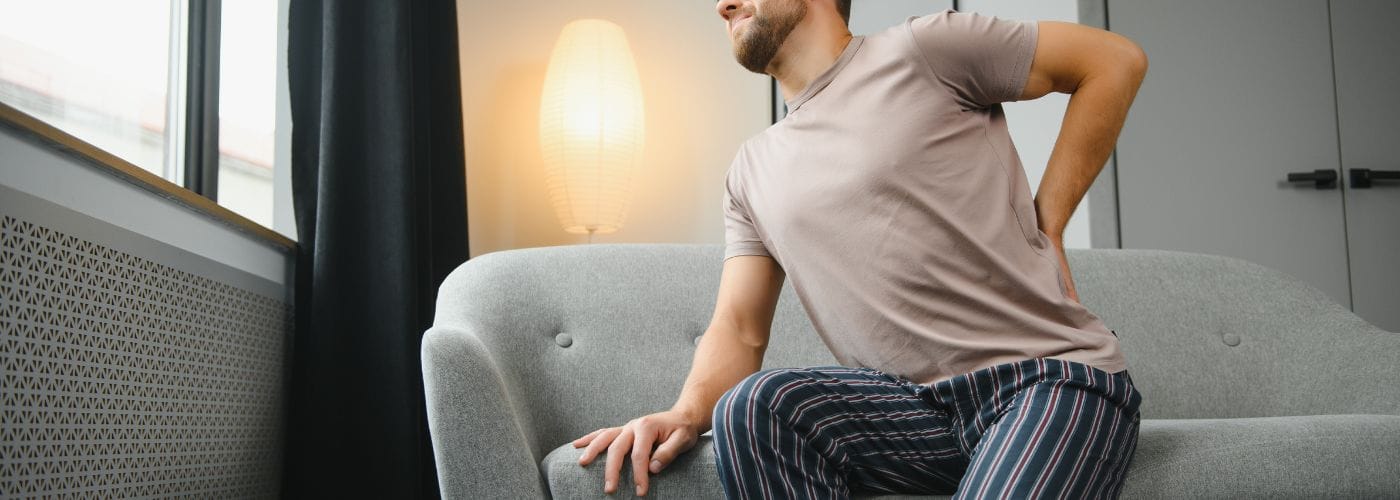BPC-157 has garnered growing attention in health and wellness circles for its reputed regenerative and healing properties. Short for “Body Protection Compound-157,” this synthetic peptide is believed to have significant benefits in areas such as tissue repair, gut health, and inflammation control.
However, as with any compound, it’s vital to understand how it behaves within the body. Two of the most common questions among BPC-157 users are: “How long does BPC 157 stay in your system?” and “How long is BPC 157 detectable?”
In this blog, we’ll demystify the pharmacokinetics and detectability of BPC-157, discuss its potential benefits, explain best practices for usage, and answer frequently asked questions.
By the end, you’ll have a solid grasp of how BPC-157 works, why its duration matters, and what to expect if you’re considering incorporating it into your wellness regimen.
Understanding BPC-157
What Is BPC-157?
BPC-157 is a synthetic peptide derived from a naturally occurring protein found in the gastrointestinal tract. The body produces a similar substance in small quantities to protect and heal the gut lining. Researchers isolated and synthesized BPC-157 to explore its broader implications for tissue regeneration and healing.
Laboratory studies suggest it may help repair tendons, muscles, and even certain nervous system tissues, although more formal clinical research is needed to confirm these benefits conclusively.
Why Do People Use BPC-157?
Individuals often turn to BPC-157 for its potential in:
- Injury Recovery: Athletes and fitness enthusiasts use it in hopes of accelerating healing in muscles, tendons, or ligaments.
- Gut Health: Since the compound originates from the gastrointestinal tract, some use it to address conditions like leaky gut or inflammatory bowel issues.
- Inflammation Control: BPC-157 may help modulate the inflammatory response, promoting faster recovery from exercise or injury.
Despite these potential benefits, it’s crucial to remember that research is still emerging, and the FDA has not approved BPC-157 for any medical use. As with all supplements, consult a qualified healthcare practitioner before adding a new compound to your regimen.
How Long Does BPC-157 Stay in Your System?
Half-Life vs. Biological Effects
When it comes to understanding the presence of BPC-157 in the body, the key concept is the peptide’s half-life—the time it takes for half of the compound to be eliminated. Some studies suggest that peptides can have relatively short half-lives, sometimes only a few hours. BPC-157 likely follows this pattern, meaning it is metabolized and broken down within a short time frame. Early data and anecdotal reports indicate the half-life of BPC-157 might range anywhere from a few hours up to 24 hours, though precise data is limited.
However, biological effects can extend far beyond the detection window. Even as the detectable levels of BPC-157 in the bloodstream diminish, the peptides may have already initiated healing and tissue regeneration processes that continue after the compound is no longer active.
Factors Influencing Duration in the Body
- Dosage: Higher doses may remain in circulation slightly longer, though the difference can be marginal.
- Frequency of Use: With consistent dosing, you might maintain elevated levels of the peptide in your body.
- Route of Administration: BPC-157 can be administered orally, subcutaneously, or intramuscularly. Each route impacts how quickly the compound is absorbed, distributed, and eliminated.
- Individual Metabolism: Genetics, age, lifestyle, and overall health can all influence how swiftly your body processes BPC-157.
- Quality of Product: Reputable sources that verify purity and potency are crucial. Contamination or product inconsistency can skew how the peptide behaves in your system.
Typical Time Frames
Peak Levels: Users often report feeling the most pronounced effects within the first few hours after administration, especially if injecting the peptide subcutaneously near the site of injury.
System Clearance: Within 24 hours, a significant portion of the administered dose will likely be metabolized. However, some remnants or effects may persist slightly longer.
While pinpointing the exact duration for every individual is difficult, anecdotal feedback suggests that BPC-157 does not remain in the body for an extended period. Most users and healthcare professionals rely on consistent daily or every-other-day dosing to maintain stable levels.
How Long Is BPC-157 Detectable?
This question often arises among competitive athletes or individuals undergoing routine drug screening. Currently, BPC-157 is not classified as a controlled substance, and standard drug panels (such as those screening for narcotics, cannabinoids, or anabolic steroids) do not typically test for peptides like BPC-157. Consequently, detectability in the context of standard testing is low.
However, specialized laboratory tests aimed at identifying peptides can theoretically detect BPC-157. If a test is specifically designed to look for it, detection might still be limited to a window of a few days at most—depending on dose and frequency.
With no widespread standardized testing available, the risk of testing positive for BPC-157 during routine checks (like employment or athletic commissions that do not ban the substance) is minimal. Still, any athlete governed by stringent anti-doping regulations should verify current guidelines with their sports organization or regulatory body, as rules can shift over time.
Step-by-Step Guide: Best Practices for BPC-157 Use
- Consult a Healthcare Professional: Before beginning any peptide therapy, discuss your health goals and medical history with a qualified provider.
- Source Quality BPC-157: Quality and purity are critical. Look for reputable compounding pharmacies or trusted suppliers that offer third-party testing.
- Select Your Administration Route:
- Oral: Typically used to target gut-related issues.
- Subcutaneous (Sub-Q) or Intramuscular (IM): Common for targeting muscle or tendon injuries directly.
- Use Sterile Technique (If Injecting):
- Wash your hands thoroughly.
- Cleanse the injection site with an alcohol swab.
- Use a new, sterile needle and syringe each time.
- Follow Dosing Guidelines:
- Dosage amounts vary widely. Many anecdotal protocols range between 200–1000 mcg per day, but individual needs differ.
- Adhere strictly to your healthcare provider’s recommendations.
- Track Your Progress: Note pain levels, mobility, or symptom improvements in a journal. Monitor for any adverse effects such as redness or swelling at the injection site.
- Rotate Injection Sites (If Using Sub-Q/IM): To minimize discomfort or tissue irritation, switch between different sites (e.g., thighs, abdomen, upper arms).
- Stay Hydrated and Support Overall Health: Adequate hydration, balanced nutrition, and proper rest can optimize the healing process.
Frequently Asked Questions
1. Is BPC-157 Approved by the FDA?
No. BPC-157 is not approved by the FDA for any medical use. It’s considered experimental, and its safety and efficacy profiles have not been firmly established through large-scale clinical trials.
2. Will BPC-157 Show Up on a Regular Drug Test?
Most standard drug tests do not screen for peptides like BPC-157. Specialized tests would be required to detect it. However, professional athletes should confirm current regulations with their respective sports bodies.
3. How Often Should I Take BPC-157?
Some users take it daily or every other day to maintain consistent levels. The exact frequency depends on factors like body weight, treatment goals, and medical advice.
4. Do I Need a Prescription for BPC-157?
BPC-157 is not FDA-approved, so many physicians do not prescribe it. However, some compounding pharmacies may offer it as a research chemical. Always exercise caution and purchase from reputable sources.
5. Are There Any Side Effects?
Reported side effects are generally mild and may include localized pain or redness at the injection site. Rarely, users report headaches, fatigue, or digestive upset. If you notice any severe or persistent issues, stop using BPC-157 and consult a healthcare professional.
6. Can BPC-157 Cure Chronic Conditions?
Research is still evolving. While it shows potential for promoting tissue repair and reducing inflammation, it’s premature to label it a “cure” for chronic conditions without more robust clinical data.
Potential Risks and Solutions
- Inconsistent Quality
- Risk: Peptides purchased from unverified vendors may contain contaminants or incorrect dosages.
- Solution: Rely on reputable suppliers that provide third-party lab test results.
- Overdosing or Under-dosing
- Risk: Using too much BPC-157 could lead to side effects; too little may not offer the desired therapeutic benefit.
- Solution: Follow medical advice or established best practices. Start with a moderate dose and adjust as needed under professional guidance.
- Uncertain Interactions
- Risk: The safety of BPC-157 taken alongside other medications or supplements remains unclear due to limited research.
- Solution: Inform your healthcare provider about all medications or supplements you’re taking. Monitor for any unusual symptoms.
- Lack of Regulation
- Risk: Without FDA oversight, purity and safety vary widely.
- Solution: Use only high-quality products from known and trusted vendors; maintain open communication with your healthcare team.
Conclusion
BPC-157 stands out as a peptide with substantial potential for promoting tissue repair, reducing inflammation, and possibly improving gut health. While many anecdotal success stories suggest it can be a valuable tool in a regenerative medicine toolbox, it is still under ongoing investigation.
When it comes to how long BPC-157 stays in your system, most evidence points toward a relatively short duration, with the compound largely metabolized within 24 hours—though its regenerative effects may last longer than its detectability.
As for how long BPC-157 is detectable, specialized testing is rare, and standard drug screenings do not typically look for this peptide.
Ultimately, anyone considering BPC-157 should weigh the benefits against the limited regulatory framework and incomplete clinical research. Whether you’re an athlete on the mend from injury, someone seeking better gut health, or simply curious about advanced peptides, be sure to approach BPC-157 with caution and informed guidance.
At American Medical Wellness, our mission is to offer the most up-to-date, evidence-based insights so you can make wise decisions for your health and wellness journey.
Disclaimer: This content is for informational purposes only and does not constitute medical advice. Always consult a qualified healthcare professional before starting or changing any medical treatment. Results and safety may vary depending on individual factors, including genetics, lifestyle, and overall health.


